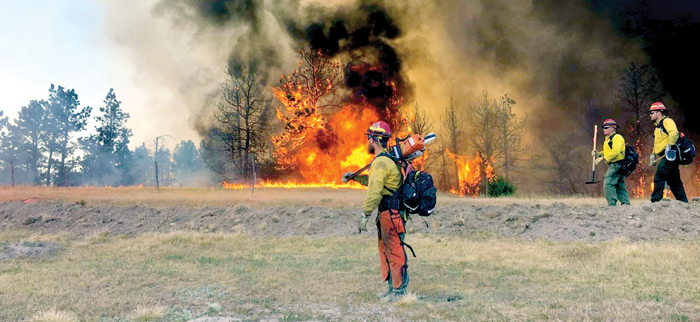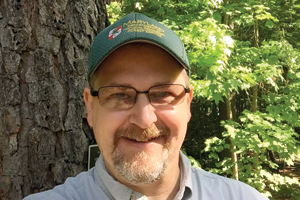From the Field: Monte Mitchell, State Fire Supervisor

Fire crew in Colorado; department photo
Employees of the Maryland Forest Service perform many roles. Some plant trees, some manage their harvest, some inspect properties. Some even battle wildland fires and educate the public about fire safety. Leading this operation is Fire Supervisor Monte Mitchell. As part of my internship, I sat down with him to ask how it all works.
A veteran of nearly three decades with the Maryland Department of Natural Resources, Mitchell oversees both the heroics in the field and the necessary work behind the scenes: awarding grants and equipment to community fire companies, managing partnerships with federal and local organizations, and purchasing equipment.
In honor of this important and lifesaving role, Mitchell was named the department’s 2016 Employee of the Year.

Monte Mitchell; department photo
How did you get started in firefighting?
I went to college for forestry and took a wildland fire class. We actually got to go out on a few fires. I was instantly drawn to the adrenaline I got while firefighting, and I loved being able to help my community and keep them safe. I became a forest ranger, and eventually moved up to being Regional Fire Specialist for the Eastern Shore. I have been with the department for 29 years now, and still get the same enjoyment out of it as I did back in that course.
We often see Maryland crews deployed to other states to fight wildland fires. How come?
We have an agreement with the U.S. Forest Service to help them fight and contain wildfires all across the nation. Back in early July, we sent a crew to Colorado for about two weeks; they were subsequently sent to South Dakota and Wyoming. At the end of July, we sent another crew out west to California.
How this mobilization works is we put our available resources in a national dispatch system called ROSS (Resource Ordering and Status System), and whoever needs help can make requests. We send anything from crews to single resources and equipment. If crews are selected, we send the firefighters in groups of 20. They are gone for 16-18 days, including travel, and work 12-16 hours each day. They do anything from initial attack on fires to maintaining long-burning fires, or even just smaller, local project work.
What should we know about preventing fires?
About 96 percent of forest fires are started by people—whether by arson, debris burning, etc. It’s important to remember to always be careful and to follow the regulations put in place when burning outside. Firewise Maryland is a great outreach program that teaches people how to mitigate the effects of fire, such as having a disaster plan, strategic landscaping, or something as simple as making sure a fire truck can make it up the driveway. Fall is one of the peak wildfire seasons in Maryland, as the drier air and breeze create conditions for wildfire to spread rapidly. So, now is a good time to get educated on fire safety.
You were named the department’s Employee of the Year; what is the most rewarding part of your job?
I was very humbled and surprised being named employee of the year. The most rewarding part of my job is being able to help my community by providing resources to neighboring fire stations in need—something that would not be possible without my team. I am grateful and proud that my employees, the Volunteer Fire Assistance Program, and the amazing firefighters of Maryland were recognized for their great work with this award.
Article by Madison Hill—summer communications intern.
Appears in Vol. 20, No. 4 of the Maryland Natural Resource magazine, fall 2017.


 1-888-373-7888
1-888-373-7888 233733
233733